Due to their lethally invasive nature, sticker weeds are among the worst kinds of lawn weeds that you will ever come across. Even though they are non-toxic, they are still a hazard to curious pets, children and bare feet. They come with sharp spikes that can easily pierce the skin and they can stick to your clothes, quickly finding a way into your homes. In this article, learn about the types of sticker weeds.
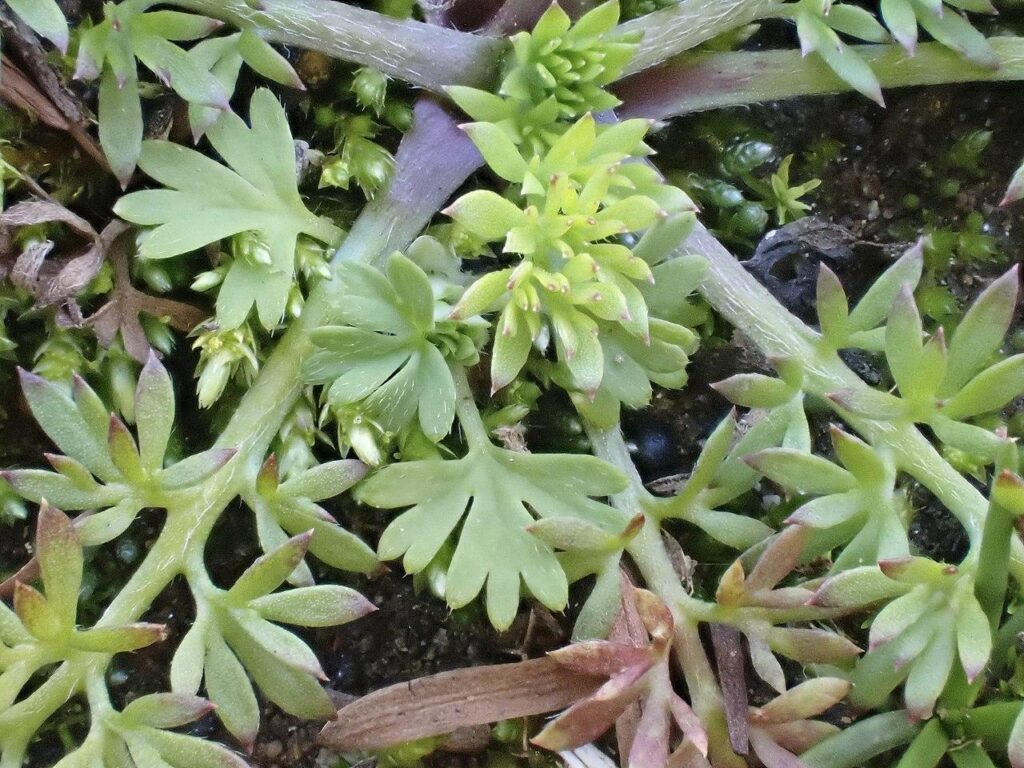
Lawn burweed: A low-growing, winter annual sticker weed.
Sticker weeds are especially a problem in dry states. People there often deal with these pesky lawn weeds regularly. There are many types of sticker weeds present in the United States, each more sickening than the other. However, one thing that they all share is that they can quickly wreak havoc on your lawn if left unattended.
What Are Sticker Weeds?
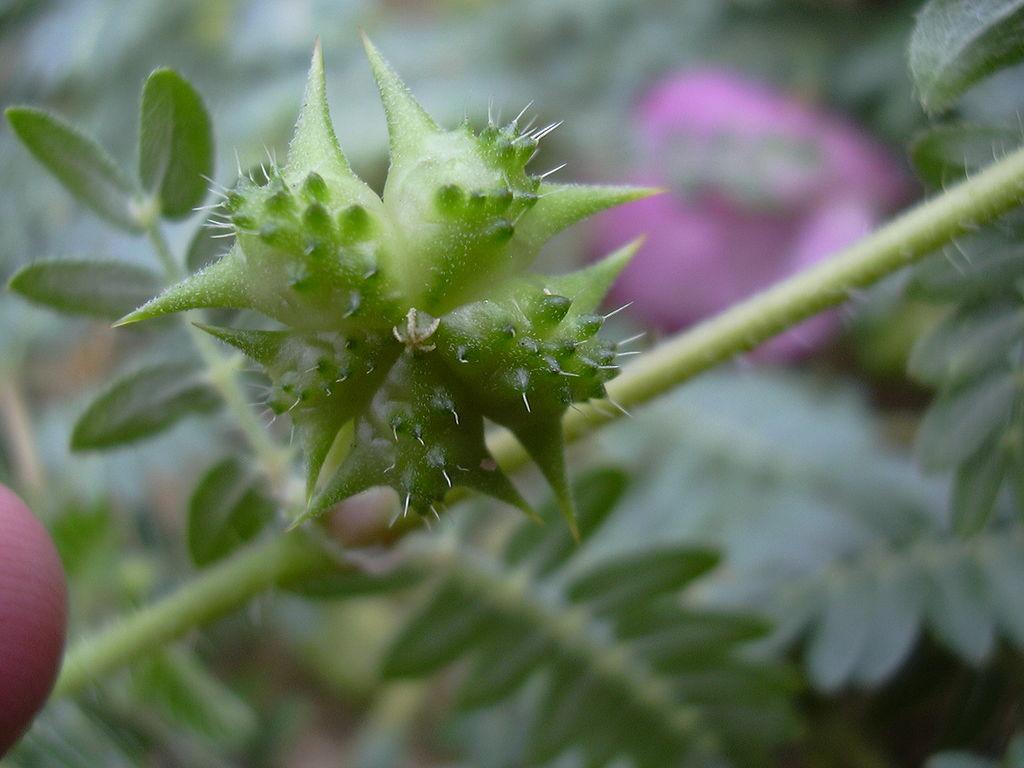
Sticker weeds are low-growing winter annual plants.
Simply put, stickers for sticker weeds are a group of plants with sharp burs or spines that can easily stick to clothes. They expand laterally and are low-growing, just like most turfgrass species. Sticker weeds grow in a range of soil types; however, they prefer damp and moist soils with lawn grass.
Another important thing to note is that sticker weeds do not grow all year. They are annual weeds that sprout in winters and often develop fully before the hot weather begins.
RELATED: Common Weeds That Look Like Grass (and How To Get Rid Of Grassy Weeds)
What Do Sticker Weeds Look Like?
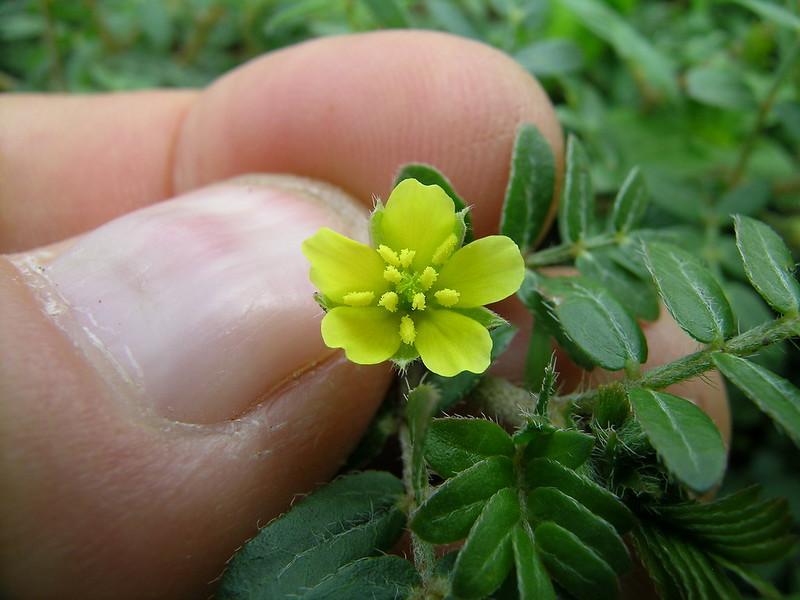
Bindii: a sticker weed of the caltrop family.
Sticker weeds are not difficult to identify if you know their physical characteristics. The most recognizable feature of sticker weeds is their leaves. They are lobed, bright green and oppositely positioned on the branch. The leaves are somewhat like those of the parsley leaves. In addition, sticker weeds often have a hairy appearance and have sharp, sticky spines.
Sticker weeds have a low-growing habit, and they expand laterally by branching sideways as they grow. When they reach maturity, they produce tiny, inconspicuous flowers. These flowers ultimately develop into seeds.
The seeds usually have sharp spines and a hard coating. Moreover, sticker weed seeds are not very visible and hard to locate. But if you are walking barefoot on a sticker weed-infested lawn, you won’t have a hard time finding them.
Common Sticker Weeds
There are many different types of sticker weeds in the United States. However, you must keep in mind that in the case of sticker weeds, many different names often refer to the same sticker plant and all sticker weeds are somewhat related to each other. Nonetheless, here is a brief introduction to some of the most common sticker weeds:
1. Sandbur

Southern sandbur: a common roadside weed.
Also known as sandspur or buffelgrass, sandbur belongs to the genus Cenchrus. The genus contains around 25 species of grasses that are often used as forage for animals when they are young. However, once they mature, they grow sharp spines that latch onto animal fur and can even scratch the faces of grazing cattle.
Sandbur is around 40 inches (100 cm) tall, and they can be identified by their twisted leaves with a small appendage at the leaf base. Flowers grow in spikelets and are covered by sharp burs that readily detach when ripe.
2. Lawn Burweed
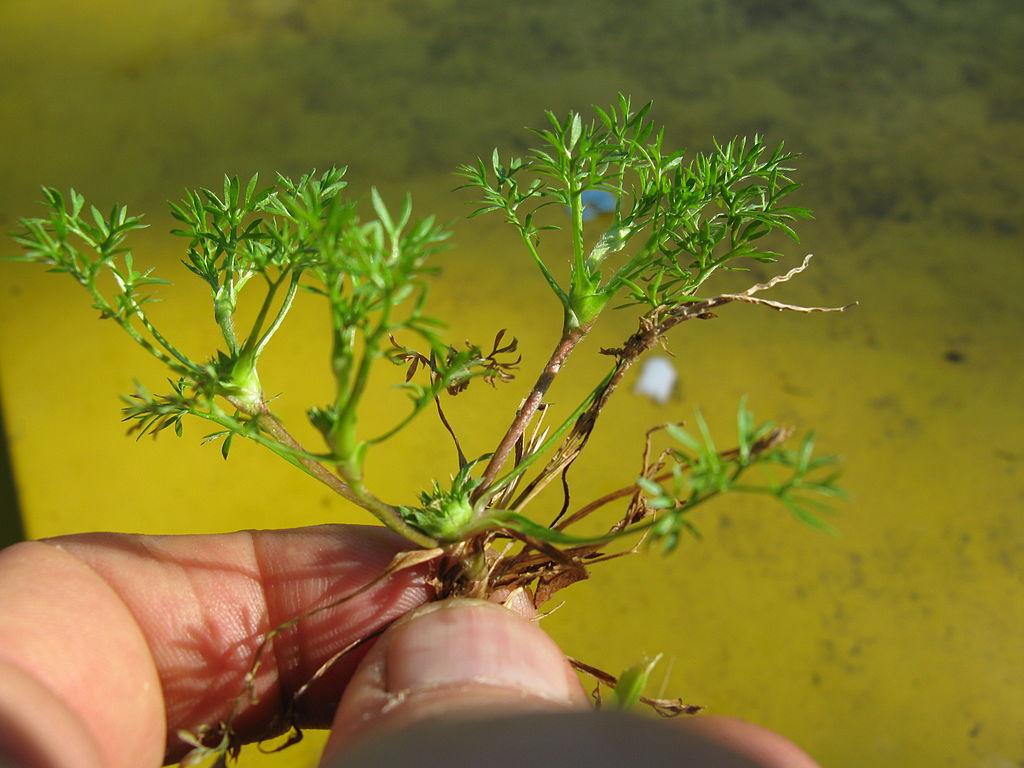
Lawn burweed: a low-growing, cool-season annual herb.
Also known as common saliva or bindi weed, it is a low-growing herbaceous annual plant. It germinates on the turf during fall when temperatures drop. However, it usually stays inconspicuous during the cold months and grows rapidly as the summer arrives. In summer, it becomes covered with spine-tipped burs.
If it is allowed to develop, tiny flowers appear, giving rise to seeds. The seeds of the plant are also present within hooked burs. Lawn burweed can be recognized by its sparsely hairy leaves that are oppositely arranged on the stem. The leaves are also divided into lobes or narrow segments.
3. Bur Clover

Bur clover: An annual broadleaf trifoliate weedy forb.
Also known as Bur medic or hairy medic, it is a weed on roadsides, agricultural lands, and other disturbed areas. Bur medic can be easily identified by its tiny, pea-like yellow flowers, purple stems, and three green clover-shaped leaves. The plant’s seed pods have numerous hooks on the exterior, which help them stick to animal fur and human clothing.
If not controlled in time, this trifoliate weed can quickly spread and take out the entire landscape. Bur clover germinates in fall and winter and then flowers during the spring. The best control strategy against bur clover is to remove or kill the weed before it flowers.
RELATED: What Is The Best Way To Kill Weeds Permanently? A Simple & Easy Guide
4. Caltrop
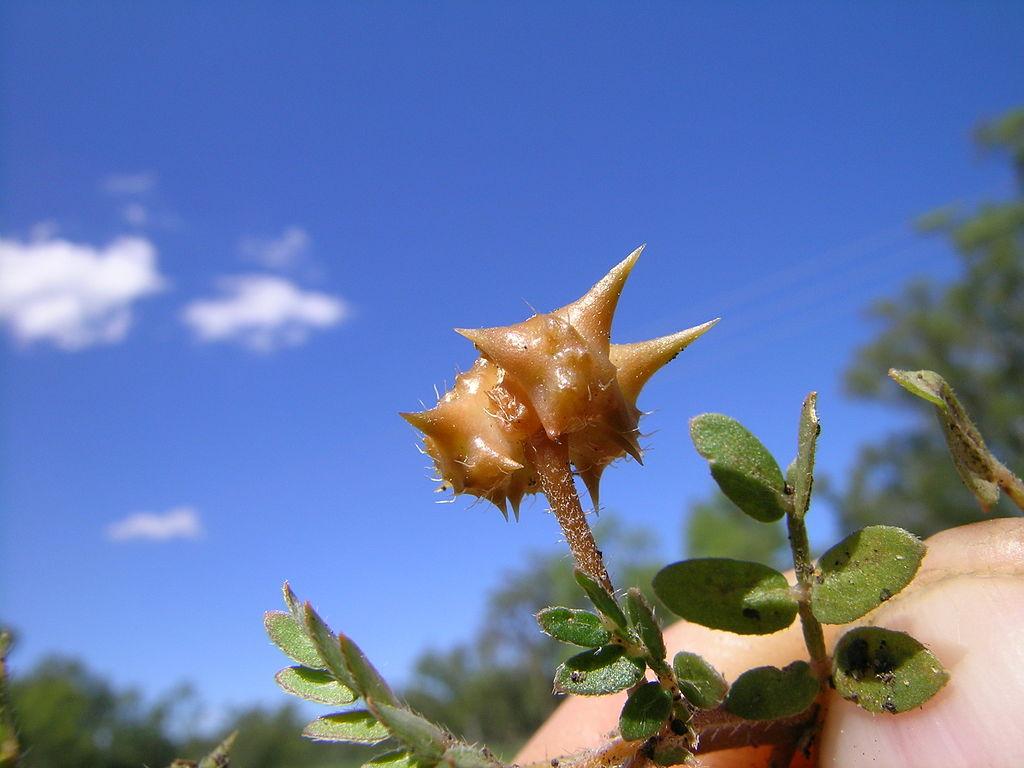
Caltrop: A nuisance weed of footpaths and sports fields.
Also known as puncture vine or tackweed, caltrop is a tough weed of lawns, pastures, cultivated fields, and waste places. Its sharp spines are harmful to pets, animals and people. Not just that, the strong, sharp spines can also puncture shows and tires, hence the name. If consumed in high amounts, the weed is also toxic to sheep and cattle.
Caltrop grows flat on the ground and forms a woody taproot. The inflorescence appears in the form of small yellow flowers on short stalks. Fruits have a woody burr with extremely sharp and rigid spines. Like many weeds, caltrop spreads via seeds, so the best strategy is to remove or kill the weed before it produces seeds.
How Do You Get Rid Of Stickers In The Grass?
There are many ways to get rid of sticker weeds and prevent them from spreading again on your lawn. The most effective of these methods is the use of herbicides. In fact, there is no shortage of herbicides that can be used against these obnoxious weeds.
However, some people avoid using chemical herbicides. Therefore, we will also describe some natural weed killers and mechanical weed removal techniques. Let’s start:
Herbicides

Using pre-emergent herbicides is usually better for turfgrass.
Herbicides are the quickest and most effective tool against sticker weeds. Sticker weeds can be killed using both pre-emergent and post-emergent herbicides. However, it is better to use pre-emergent herbicides as they only target the roots of developing plants and leave already developed roots undamaged.This saves the turfgrass from damage and only kills the growing weeds. However, they can still affect grass growth and development. The best herbicides against sticker weeds are those that contain Oryzalin and Benefin.
Mechanical Control

Use gloves when pulling weeds out of your lawn with your hands.
If you only see one or a few sticker weeds on your lawn, you can simply pull them out with your hands. However, because they have sharp spines, make sure that you wear gloves. Alternatively, you can pull out the weed using garden tools such as a weeder.
In addition to that, we suggest you pull out the weeds when the soil is moist and soft. Also, when pulling, do it in an angle swift movement so that the whole weed comes out with roots quickly and easily.
Natural Weed Killers
If you do not want to use herbicides and are too scared of pulling out stickers from your yard with your hands, you can use vinegar, soap water, and salt to do the job as well. Vinegar contains acidic compounds that are toxic to plants. Take a spray bottle and put vinegar in it. Next, spray it directly on the weed, and it will die within a few days.
You might have to spray vinegar a few times. Also, don’t spray vinegar on the grass as it can kill it too. You can also apply salt or boiling water to kill the sticker weeds on your lawn. However, these natural kills, unlike herbicides, are not specific and will kill healthy plants too if applied to them.
Frequently Asked Questions (FAQs)
What fertilizer kills stickers?
Fertilizers are not designed to kill sticker weeds or any other weeds as a matter of fact. Therefore, you will have to use a pre-emergent or a post-emergent herbicide to kill stickers on your lawn. You can also use natural weed killers such as vinegar and salt, but they are non-specific in action and will kill the grass too.
Are sticker burrs poisonous?
Most of them are not, but they can still cause a traumatizing injury to animals, pets, children, and even adults if stepped on or ingested accidentally.
Is pulling weeds a waste of time?
If there are only a few weeds, then no, and if the lawn is filled with weeds, then yes.
Sources for Further Reading
- How To Win The Fight Against Stickers. Texas A&M AgriLife Communications. (2021). Retrieved 14 May 2022, from https://today.tamu.edu/2021/06/09/how-to-win-the-fight-against-stickers/
- Spurweed. Dale Bumpers College of Agricultural, Food & Life Sciences. (2022). Retrieved 14 May 2022, from https://www.uaex.uada.edu/yard-garden/in-the-garden/reference-desk/weeds/spurweed.aspx
- Lawn burweed (sticker weed) control 02-11-08 | Mississippi State University Extension Service. (2022). Retrieved 14 May 2022, from http://extension.msstate.edu/newsletters/turf-tips-newsletter/2008/lawn-burweed-sticker-weed-control-02-11-08
Do you know of other types of sticker weeds? Comment below. Also, check out our other articles:
Spiky Weeds That Can Ruin Garden Beds (And How To Get Rid Of Them?)
How To Use a 2,4-D Lawn Weed Killer To Control Weeds? (And Is It Safe?)
What Is The Best Way To Kill Weeds Permanently? A Simple & Easy Guide







